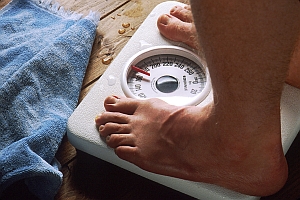Researchers at Ohio State University in Columbus and Loyola University in Baltimore have found setting specific goals can help improve dietary habits of people with Type 2 diabetes. Their findings appear in the January 2012 issue of the journal Patient Education and Counseling (paid subscription required).
The team led by Ohio State nutrition professor Carla Miller studied the impact of goal setting on meeting the objective of people with type 2 diabetes to eat either six or eight daily servings of foods with a low glycemic index (GI). Low GI foods — e.g., vegetables, fruits, nuts, and seeds — are those with carbohydrates that are digested slowly and thus are less likely to spike blood-sugar levels than would carbohydrates with a high GI.
The glycemic index is represented by a scale from 1 to 100. Low-GI foods have an index value of 55 or fewer points. Foods with a point value of 100 are the equivalent of pure glucose.
The study enrolled 35 adults age 40 to 65 years with a type 2 diabetes, and a hemoglobin A1c value — a clinical marker for blood sugar control — of 7 percent or higher over two to three months. All enrollees took part in a five week nutrition class before they were assigned to one of two groups: (1) those with a goal of eating six low-glycemic-index foods per day and (2) those with a goal to eat eight low-glycemic-index foods per day, all over an eight-week period.
Participants met individually with a dietitian to discuss their progress about four weeks into the program. They also monitored their own diet and blood glucose for at least four days per week during the course of the study and received feedback on their diet.
Overall, most participants reached the eight-serving goal. Both the six- and eight-servings groups showed a significant average increase in the total daily servings of low-glycemic-index foods. They also showed a significant average decrease in caloric intake and overall dietary glycemic index.
All participants did not reach their goals, however, which is why the researchers sought to understand more about how goal-setting influenced participants’ behavior. Miller’s team looked more into the confidence of participants in their ability to engage in this specific behavior, a concept known as self-efficacy. They found the participants who felt more committed to the goal and those with a higher level of self-efficacy believed that the goal was less difficult.
The specificity of goals is key, says Miller. “We ask people to set goals because they motivate action,” she notes. “Telling people to ‘go out and do your best’ is not effective. It’s not specific enough, or targeted enough, or timely.”
For many participants, however, reaching the eight-serving goal was not that difficult. When the study was completed, the researchers learned that many of those who took part were already eating about six servings per day of foods with a low GI. Miller says this finding suggests goals can be set higher and more customized for the individual.
“One way to build self-efficacy is by helping people set a specific goal that is moderately difficult, action-oriented, and achievable in small successive steps,” which leads to more satisfaction in achieving the goal, Miller adds. “That satisfaction helps them say, ‘Let’s set the next higher goal’.”
Read more: NSF Grant to Fund Smartphone App for Diabetes Control
* * *


 RSS - Posts
RSS - Posts
[…] Goal Setting Helps Change Diets of Adults with Diabetes […]